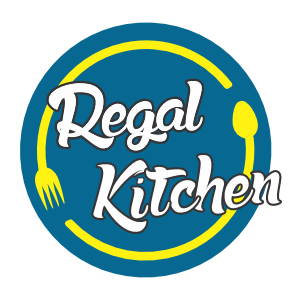Ready to Cook and Ready to Eat meals are becoming a fast-growing trend in this pandemic. Companies in the foodservice sector are capitalizing on the increased profit margins from ready to cook meals. Food shopping behaviour has undergone a change. Cloud kitchens have mushroomed and hotels and restaurants are looking at safer ways to buy their food.
THE PANDEMIC BRINGS NEW CHALLENGES
A change is being seen in the way people shop and spend their money. Before the pandemic, consumer spend was mostly on restaurant dining, take-aways and vacations. The COVID-19 crisis has discouraged travel, forced restaurants to close and shut down offices.
Shoppers have shifted to purchasing food from cloud kitchens. These kitchens and restaurants are functioning on half capacity and are experiencing a real need for raw materials. Manpower shortages are forcing restaurants and hotels to look at convenience food. This is where ready to eat and ready to cook gravies, curries and sauces are being highly used.
US alone reported nearly 55% of its population ordering from cloud kitchens. With work from home being the new norm, families including kids are ordering in from restaurants and cloud kitchens more than ever.
Meal preparation is becoming difficult as parents juggle between video calls and work-related deadlines. Thus ready to cook and ready to eat meals are becoming an easy way to overcome cooking fatigue.

HOW READY TO EAT MEALS HELP
Retailers are fast adapting and are meeting the Horeca sector’s needs by offering ready to cook and ready to eat meals. Here are some key benefits observed:
- Low prices: Ready to Eat and Ready to Cook Meals are more competitively priced as they are limited in variety. Cloud kitchens and restaurants can further reduce costs through bigger orders, bundling and paying a one-time service fee.
- Convenience: Huge manpower shortages are being observed with staff falling sick or having to stay at home due to lockdowns. Ready to eat meals reduce the time taken to source raw materials and prepare a meal from scratch.
- Better margins per order: As these are manufactured at the facility, retailers observe a higher margin for every sale. Ready to eat meals are proving more competitive for consumer spending in cloud kitchens as well as the Horeca sector.
- Brand Differentiation: With ready to cook meals being fairly niche, retailers of ready to cook meals can easily exhibit both quality and value for money through their products. They thus become staunch brand differentiators and can stand out from their competitors.
- Utilization of floor space: Smart retailers and manufacturers of ready to eat and ready to cook meals have converted their floor space into cloud kitchens. Through these, they are not only utilizing their products but are also capturing humongous share from the restaurant vertical.
- Have a good brand experience online: Through online shelves, manufacturers of ready to eat meals are able to capture a large audience and entice them with what their brand offers. This includes a focus on veganism, organic produce or preservative-free curries.
BRIDGING GAPS TO BUILD THE CUSTOMER BASE
Ready to eat meals in our country is very different from the bland and frozen TV dinners of the West. Using the latest innovations in taste and flavor and a smart selection of interesting recipes, ready-to-cook and ready-to-eat meals in India are quite similar to what your ‘nani’ or ‘ajji’ makes.
For instance, ready-to-eat ‘upma’ and ‘sambar’ has found its niche among students in the domestic market of India. The pandemic has given a new impetus to the business of ready-to-cook and ready-to-eat meals.
ITC Kitchens of India have their success story in signature dishes such as Chicken Chettinad, Dal Bukhara, Aloo Mutter, Palak Paneer and Pav Bhaji. These have gained popularity in the pandemic. Similarly, Prasuma specializes in gourmet cold meats and deli products. They have broadened their offerings to include Momos.
These momo delicacies are available in four flavors – Original Chicken, Spicy Chicken, Pork and Vegetable Momos. The best part about them is the ease of cooking. All they require is a two minute whirl in the microwave or a steamer. They also come with their own dipping sauces. Prasuma’s offerings are preservative-free. The original recipe was sourced from the family’s own recipes.
With restaurants shut and rising concerns about food safety and hygiene, cloud kitchens are utilizing curries, pastes and RTE meals for better customer engagement and retention. The good news is that hotels, restaurants and cloud kitchens using this category are witnessing a spike in demand ranging from 30%-40% which bodes well for this trend.
The growth can also be attributed to young at-home working couples who are hard-pressed for time and want easy dinners without the hassle of cooking every day. They also want to venture beyond the usual instant noodles, pastas and pizzas which are not so healthy. Anticipated to cross a CAGR of 16% by 2023, the RTE food category is a promising bet.

HOMEBOUND DINING
When the pandemic hit in early 2020, many countries urged their residents to stay at home and shelter in place. Subsequently eating at home jumped to nearly 88% while dining out reduced to half. With many switching to cooking and baking, the demand for convenience food has risen.
A decline in physical activity and spurt in cloud kitchens has forced many consumers to switch to vegan, ready-to-cook pastes and curries. Cooking at home has helped in cost savings and healthier eating.
Cooking dinner at home has become boring and repetitive and the meal fatigue has forced many to order from cloud kitchens. E-Commerce has further boosted prospects for ready-to-eat meal manufacturers with shoppers ordering in from their online E-stores.
Consumers are showing heightened interest in premium and speciality ingredients to recreate their at-home cooking experiences. This is a trend that is anticipated to continue in the future.



